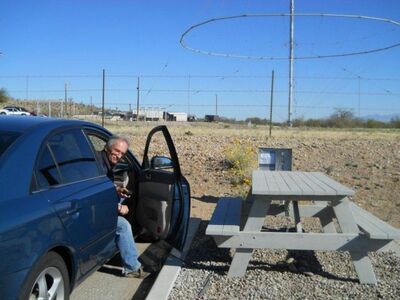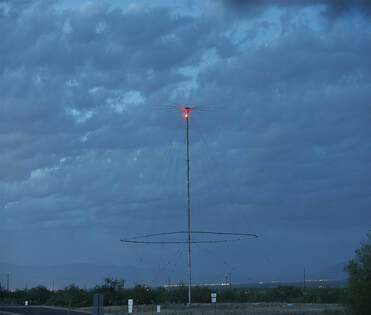Titan Missile Museum
|

Titan Missile Museum
|

|
1/21/2023
Boyscout Troup 316 and Titan Missile Museum John Lynn KL7CY and Bruce Tewksbury K3BAT set up a motor home at the Titan Missile Museum on January 21, 2023 to meet with a group of Boy Scouts from Troop 316 in Phoenix. They discussed ham radio in general, the Discone Antenna, and demonstrated VHF radio using the clubs repeater and HF radio using the Discone antenna at the museum. Among the group were two scouts and 3 leaders who had Technician licenses. The Titan Missile Museum personal were very enthusiastic about our clubs involvement with the Museum . |
|
4/1/2021
The graph is a VNA scan from 3.4 to 31mHz of the Titan Missile Museum discone antenna performed with an AIM 4170 on March 30, 2021.
It can be seen the antenna has an unusually low SWR across the entire range tested. However, many present day transceivers will start doing a power protection (reduction) at a 2 to 1 SWR so the full benefit of this antenna won’t be realized without some additional matching at the feed point. N9MW |

On January 26, 2017, the Green Valley Amateur Radio Club and Wallen Communications out of Tucson, Arizona put in another new RG-213U transmission line and re-lit the obstruction lights on the Collins Discone antenna at the Titan Missile Museum in Sahuarita, Arizona. We are working with the Titan Missile Museum to keep the lights lit. It is in working order and ready for amateur radio use.
Ham radio operators are welcome to sign in at the Titan Museum front desk between 8:45am and 4:30pm seven days a week and use the Discone antenna. The Discone now operates on 40, 20, 17, 15, 12, 10 and 6 meters. Please abide by the rules of the Titan Missile Museum. Enjoy yourselves and make a lot of QSO's. 73's Tom Lang K7VOA |
|